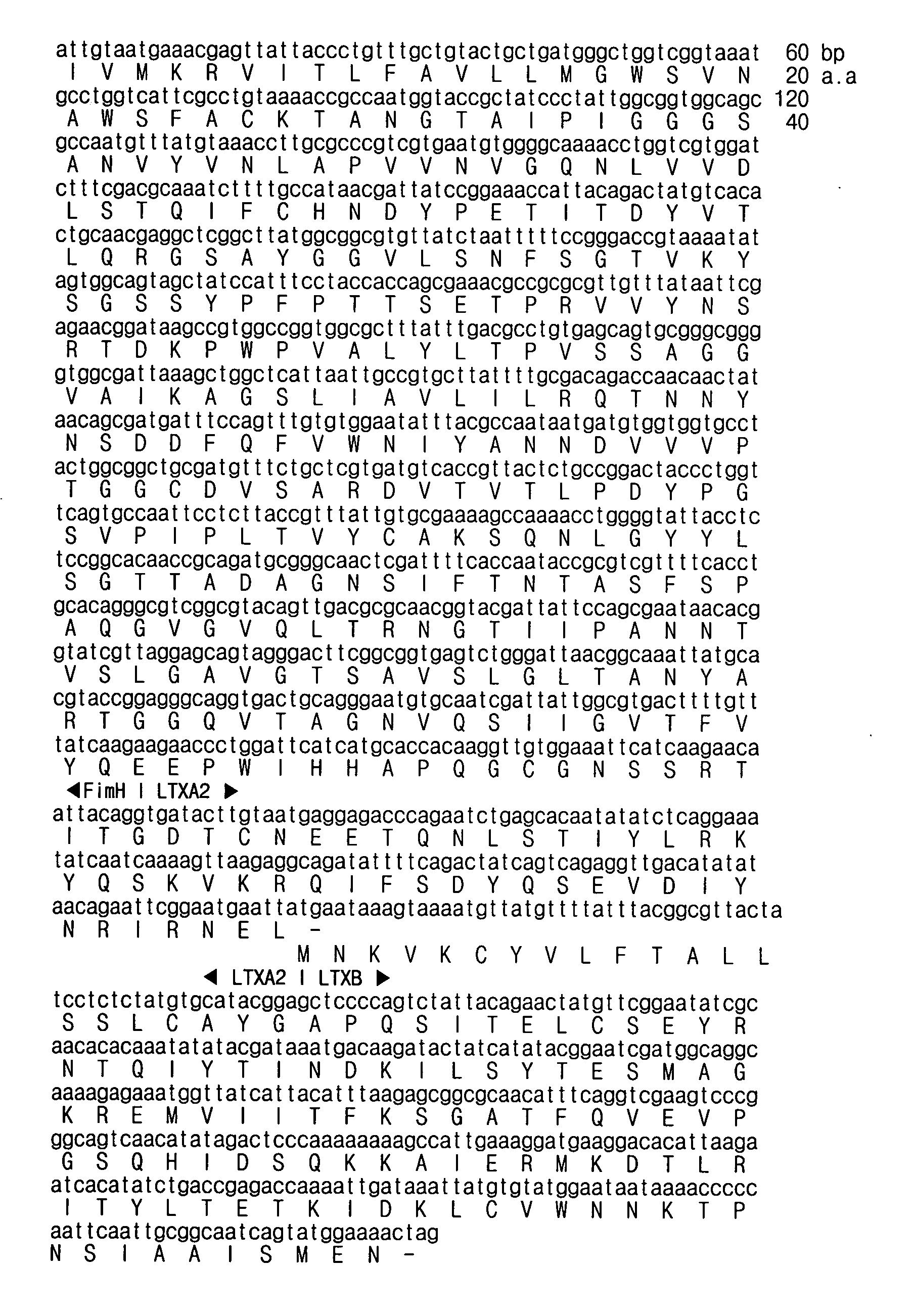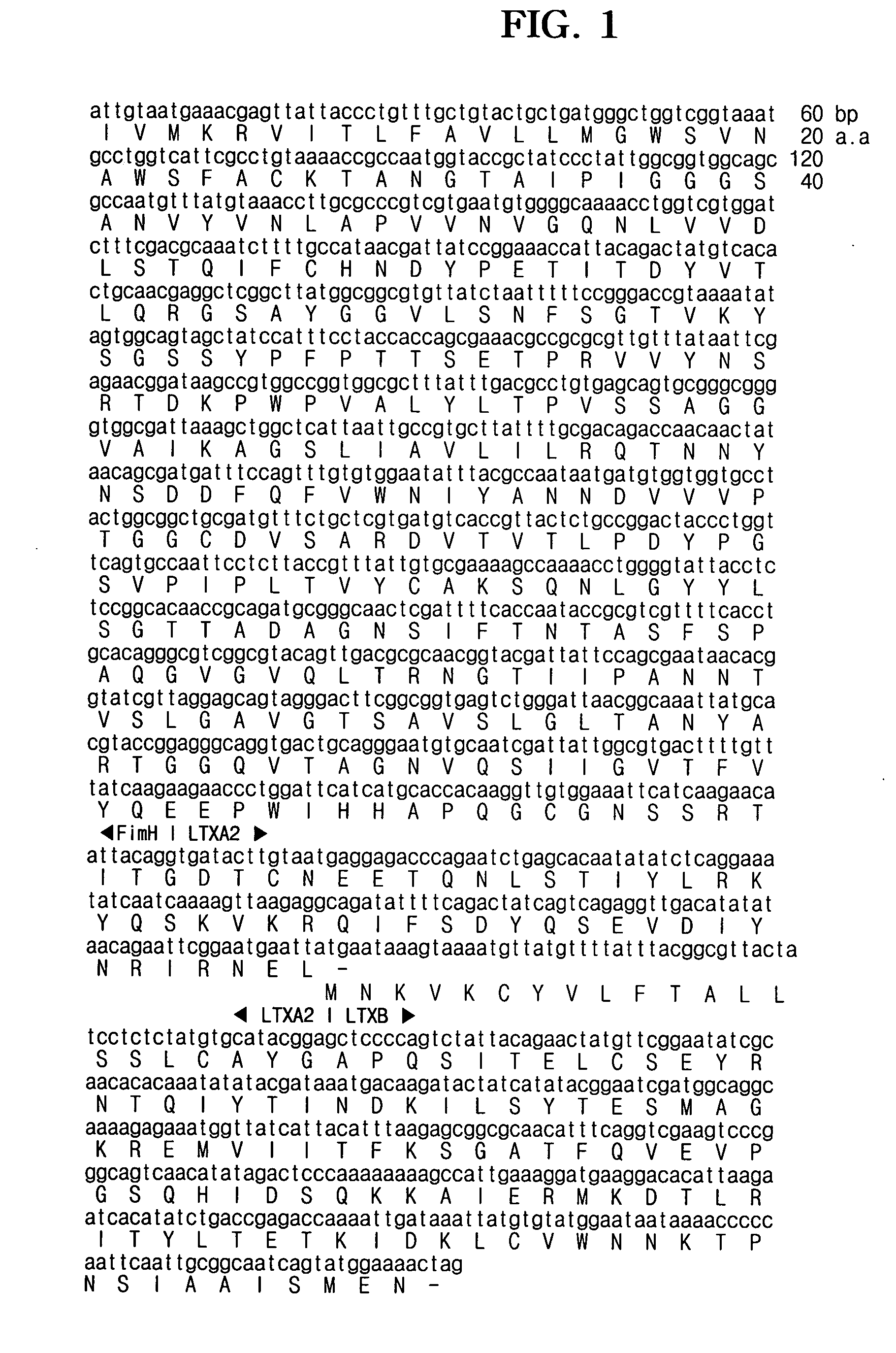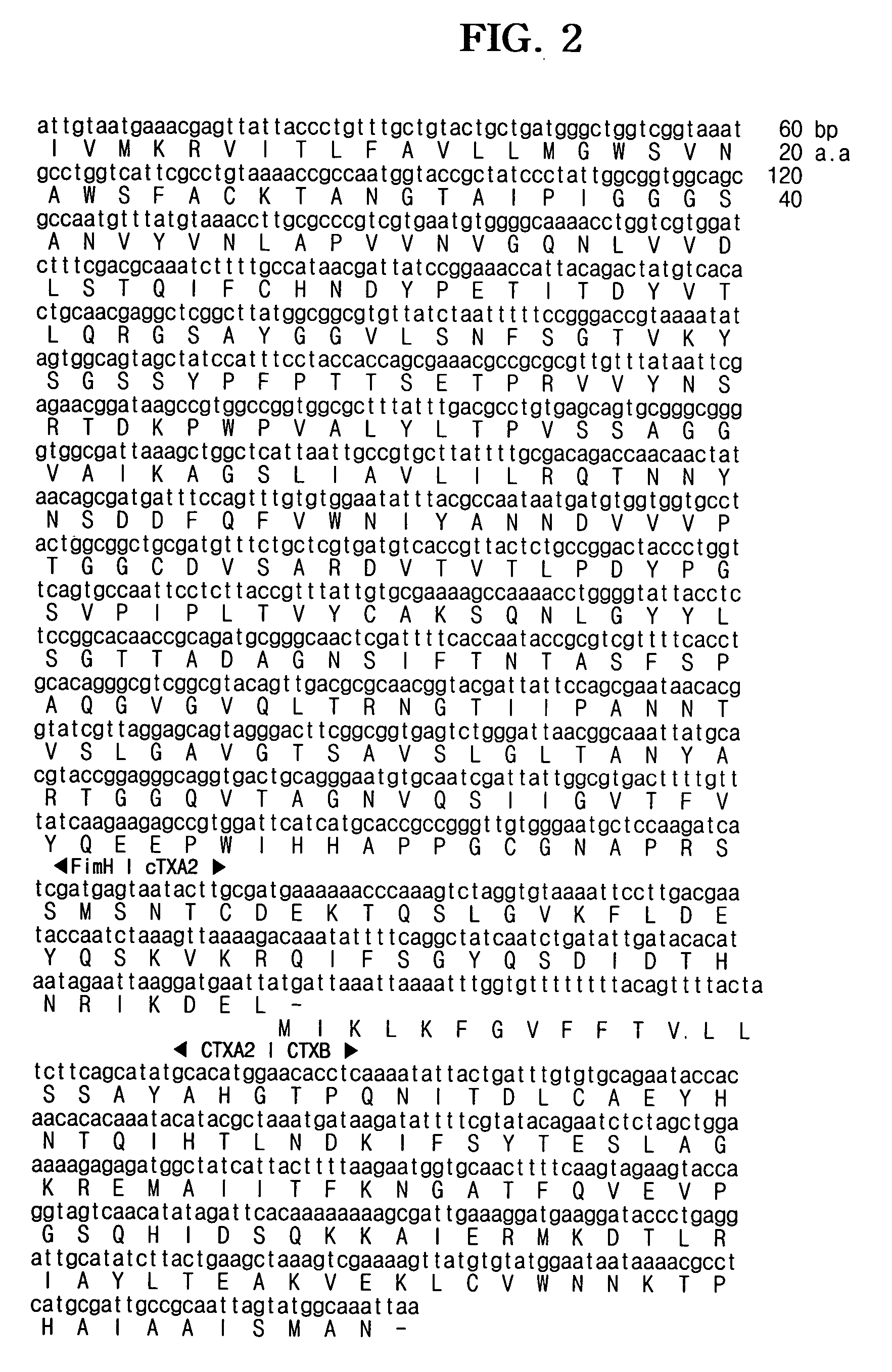Recombinant DNA, plasmid, transformed microorganism and vaccine protein for prevention and therapy of urinary tract infection
a technology of plasmids and vaccine proteins, applied in the direction of peptides, fungi, drug compositions, etc., can solve the problems of antibiotic-resistant bacteria emergence, transition to chronic infection, and women's sensitivity to urinary tract infections
- Summary
- Abstract
- Description
- Claims
- Application Information
AI Technical Summary
Benefits of technology
Problems solved by technology
Method used
Image
Examples
example 1
Isolation of Chromosomal DNA from Uropathogenic E. coli
[0070] An uropathognic E. coli was inoculated in tryptic soy broth and cultured at 37° C. for 12 hrs. Chromosomal DNA was isolated from the cultured E. coli according to a bacterial chromosomal DNA isolation method.
example 2
Amplification and Cloning of fimH / ctxa2b Chimeric Gene
[0071] A fimH / ctxa2b chimeric gene fragment was prepared by PCR using as templates a fimH′ gene (924 bp), prepared by adding 12 bases at the upstream of a ctxa2b gene to the downstream of a fimH gene, and a ctxa2b′ gene (578 bp), prepared by adding 12 bases at the downstream of a fimH gene to the upstream of a ctxa2b gene, with a oligonucleotide primer set designed to allow for a PCR product to have a BamHI site at its 5′ end and a HindIII site at its 3′ end. The amplified product was electrophoresed on a 1% agarose gel and stained with EtBr. When the stained DNA was visualized under ultraviolet radiation, a distinct band was found at a position of 1,478 bp predicted from the size of the fimH / ctxa2b chimeric gene (FIG. 3). The amplified fimH / ctxa2b chimeric gene fragment was further confirmed by restriction mapping with DsaI, PstI and SspI. Then, the PCR product was cloned into an expression vector, pMAL-p2E, which was pre-diges...
example 3
Amplification and Cloning of fimH / ltxa2b Chimeric Gene
[0072] A fimH / ltxa2b chimeric gene fragment was prepared by PCR using as templates a fimH′ gene (924 bp), prepared by adding 12 bases at the upstream of a ltxa2b gene to the downstream of a fimh gene, and a ltxa2b′ gene (611 bp), prepared by adding 12 bases at the downstream of a fimH gene to the upstream of a ltxa2b gene, with a oligonucleotide primer set designed to allow for a PCR product to have a BamHI site at its 5′ end and a HindIII site at its 3′ end. The amplified product was electrophoresed on a 1% agarose gel and stained with EtBr. When the stained DNA was visualized under ultraviolet radiation, a distinct band was found at a position of 1,511 bp predicted from the size of the fimH / ltxa2b chimeric gene (FIG. 5). Then, the PCR product was cloned into an expression vector, pMAL-p2E, digested with BamHI and HindIII, thus yielding pMALfimH / ltxa2b (FIG. 6A). It was investigated whether the obtained vector contained the suc...
PUM
| Property | Measurement | Unit |
|---|---|---|
| molecular weight | aaaaa | aaaaa |
| concentration | aaaaa | aaaaa |
| pH | aaaaa | aaaaa |
Abstract
Description
Claims
Application Information
 Login to View More
Login to View More - R&D
- Intellectual Property
- Life Sciences
- Materials
- Tech Scout
- Unparalleled Data Quality
- Higher Quality Content
- 60% Fewer Hallucinations
Browse by: Latest US Patents, China's latest patents, Technical Efficacy Thesaurus, Application Domain, Technology Topic, Popular Technical Reports.
© 2025 PatSnap. All rights reserved.Legal|Privacy policy|Modern Slavery Act Transparency Statement|Sitemap|About US| Contact US: help@patsnap.com



